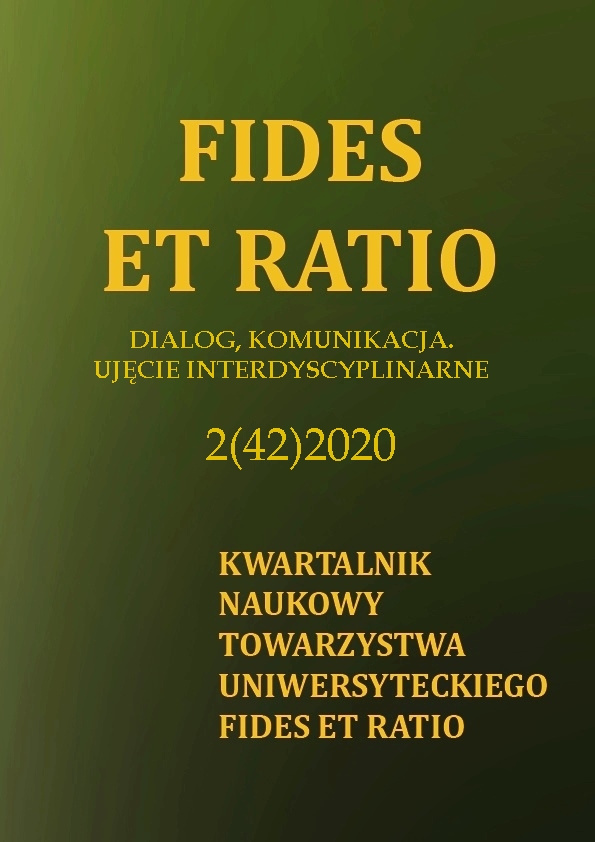Abstrakt
Zagadnieniem budzącym ostatnio coraz większe zainteresowanie badaczy i praktyków jest kwestia współpracy rodzicielskiej. Na gruncie polskim zjawisko to było badane w niewielkim stopniu. Współpraca rodzicielska, zawiązująca się pomiędzy rodzicami tuż po narodzinach ich pierwszego dziecka, odnosi się do sposobu, w jaki matka i ojciec współdziałają ze sobą w opiece i wychowaniu potomstwa. Narodziny dziecka zmieniają charakter relacji łączącej parę, konfrontując ją z wieloma nowymi, często nieprzewidzianymi wyzwaniami. Podejmując się tych wyzwań, rodzice mogą przyjąć postawę współdziałania, okazując sobie wzajemne wsparcie i wzmacniając się w sprawowanych przez siebie rolach, lub rywalizować między sobą, krytykując się nawzajem i umniejszając wagę realizowanych zadań. Ważnym aspektem współpracy jest sposób komunikowania się. Czynnik ten pełni ważną rolę w funkcjonowaniu systemu rodzinnego na każdym etapie cyklu jego życia. Badanie zjawiska współpracy rodzicielskiej może dostarczyć wiedzę niezbędną do opracowania programów prewencyjnych i interwencyjnych mających na celu poprawę funkcjonowania rodziny.
Bibliografia
Allen, S.M., & Hawkins, A.J. (1999). Maternal gatekeeping: Mothers’ beliefs and behaviors that inhibit greater father involvement in family work, Journal of Marriage and the Family, 61, 199–212, doi: 10.1037/a0031259.
Belsky, J., Woodworth, S., Crnic, K. (1996). Trouble in the second year: Three questions about family interaction, Child Development, 67, 556–578, doi: 10.2307/1131832.
Belsky, J., Crnic, K., Gable, S. (1995). The determinants of coparenting in families with toddler boys: Spousal differences and daily hassles, Child Development, 66, 629–642, doi: 10.1111/j.1467-8624.1995.tb00894.x.
Christopher, C., Umemura, T., Mann, T., Jacobvitz, D., Hazen, N. (2015). Marital Quality over the Transition to Parenthood as a Predictor of Coparenting, Journal of Child and Family Studies, 24 (12), 3636–3651, doi: 10.1007/s10826-015-0172-0.
Cook, J.C., Schoppe-Sullivan, S.C., Buckley, C.K., Davis, E.F. (2009). Are Some Children Harder to Coparent than Others? Children's Negative Emotionality and Coparenting Relationship Quality, Journal of Family Psychology, 23 (4), 606–610, doi: 10.1037/a0015992
Cowan, C.P., Cowan, P.A. (1988). Who does what when partners become parents: Implications for men, women, and marriage, Marriage and Family Review., 12, 105-131, doi: 10.1300/j002v12n03_07.
Cox, M. J., Paley, B. (1997). Families as systems, Annual Review of Psychology, 48, 243-267.
Davis, E.F., Schoppe-Sullivan, S.J., Mangelsdorf, S.C., Brown, G.L. (2009) The Role of Infant Temperament in Stability and Change in Coparenting Across the First Year of Life, Parenting: Science And Practice, 9, 143–159, doi: 10.1080/15295190802656836
Deutsch, F.M. (1999). Halving it all: How equally shared parenting works. Cambridge,
MA: Harvard University Press.
Doherty, W.J., Beaton, J.A. (2004). Mothers and fathers parenting together, (in:)
A.L. Vangelisti (ed.), Handbook of family communication, 269-286, Mahwah, New Jersey, London: Lawrence Erlbaum Associates.
Encyklopedia Katolicka, (2006). Macierzyństwo, Tom XI, s. 730-731, Lublin. TN KUL.
Encyklopedia Katolicka, (2010). Ojcostwo, Tom XIV, s. 438, Lublin. TN KUL.
Feinberg, M., Brown, LD., Kan, ML. (2012). A Multi-Domain Self-Report Measure of Coparenting, Parenting, Science and Practice, 12 (1), 1–21.
Feinberg, M. E. (2002). Coparenting and the Transition to Parenthood: A Framework for Prevention, Clinical Child and Family Psychology Review, 5 (3), 173–195.
Feinberg, M., Kan, M.L. (2008). Establishing Family Foundations: Intervention Effects on
Coparenting, Parent/Infant Well-Being, and Parent–Child Relations, Journal of Family Psychoogy, 22 (2), 253–263.
Feinberg, M., Kan, M.L., Hetherington, E.M. (2007) Longitudinal study of coparenting conflict on adolescent maladjustment, Journal of Marriage and Family, 69, 687–702.
Gable, S., Crnic, K., & Belsky, J. (1994). Coparenting within the family system: Influences on children’s development, Family Relations: An Interdisciplinary Journal of Applied Family Studies, 43, 380-386, doi: 10.2307/585368.
Jouriles, E.N., Murphy, C.M., Farris, A.M. (1991). Marital adjustment, parental disagreements about child rearing, and behavior problems in boys: Increasing the specificity of the marital assessment, Child Development, 62, 1424–1433, doi: 10.2307/1130816.
Lewis, J.M., Owen, M.T., & Cox, M.J. (1988). The transition to parenthood: III. Incorporation of the child into the family, Family Process, 27, 411–421, doi: 10.1111/j.1545-5300.1988.00411.x.
Lindsey, EW., Caldera, Y., Colwell M. (2005). Correlates of Coparenting During Infancy, Family Relations, 54, 346–359.
McHale, J.P., Kuersten-Hogan, R., Rao, N. (2004). Growing Points for Coparenting Theory and Research, Journal of Adult Development, 11 (3), 221–234, doi: 10.1023/b:jade.0000035629.29960.ed.
McHale, J.P. (1995). Coparenting and triadic interactions during infancy: The roles of marital distress and child gender, Developmental Psychology, 31, 985–996, doi: 10.1037/0012-1649.31.6.985.
McHale, J.P. (1997). Overt and covert coparenting processes in the family, Family Process, 36, 183– 201, doi: 10.1111/j.1545-5300.1997.00183.x
McHale, J.P. (2007). When infants grow up in multi-person relationship systems, Infant Mental Health Journal, 28(4), 370–392.
Minuchin, S. (1974). Families and family therapy, Cambridge: Harvard University Press.
Owen, M.T., Cox, M. (1997). Marital conflict and the development of infant–parent attachment relationships, Journal of Family Psychology, 11, 152–164.
Palkovitz, R., Fagan, J., Hull, J. (2014). Coparenting and children’s well-being, (in:)
N.J. Cabrer, C.S. Tamis-LeMonda (eds.), Handbook of Father Involvement: Multidisciplinary Perspectives, 202-219, New York: Routledge.
Patterson, C.J., Sutfin, E.L., Fulcher, M. (2004). Division of Labor Among Lesbian and Heterosexual Parenting Couples: Correlates of Specialized Versus Shared Patterns, Journal of Adult Development, 11 (3), 179–189, doi: 10.1023/b:jade.0000035626.90331.47.
Pinsof, W.M. (1992). Toward a Scientific Paradigm for Family Psychology: The Integrative Process Systems Perspective, Journal of Family Psychology, 5 (3–4), 432-447, doi: 10.1037/0893-3200.5.3-4.432.
Satir ,V. (1972). Peoplemaking, Palo Alto, CA: Science and Behavior Books.
Satir, V. (1988). The New Peoplemaking, Mountain View, CA: Science and Behavior Books.
Schoppe, S.J., Mangelsdorf, S.C., Frosch, C.A. (2001). Coparenting, family process, and family structure: Implications for preschoolers’ externalizing behavior problems, Journal of Family Psychology, 15, 526–545, doi: 10.1037/0893-3200.15.3.526.
Schoppe-Sullivan, S.J., Cannon, E.A., Brown, G.L., Mangelsdorf, S.C., Szewczyk-Sokołowski, M. (2008). Maternal Gatekeeping, Coparenting Quality, and Fathering Behavior in Families With Infants, Journal of Family Psychology, 22 (3), 389-398, doi: 10.1037/0893-3200.22.3.389.
Terry, D.J., McHugh, T.A., Noller, P. (1991). Role dissatisfaction and the decline in marital quality across the transition to parenthood, Australian Journal of Psychology, 43, 129–132, doi: 10.1080/00049539108260136.
Van Egeren, L.A. (2004). The development of the coparenting relationship over the transition to parenthood, Infant Mental Health Journal, 25 (5), 453–477, doi: 10.1002/imhj/20019.
